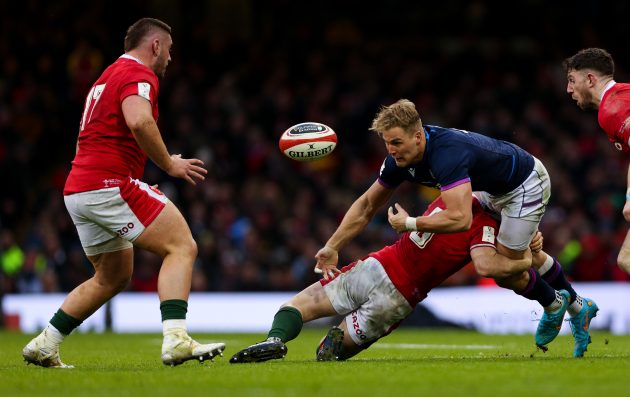From halting attacking progress to creating transition ball, jarring or tearing ball loose is an amazing defensive weapon. As Opta by Stats Perform shows us, it's happening regularly
Have you noticed how many spills and rips in the tackle there have been in two rounds of the men’s Six Nations?
According to Opta by Stats Perform, on 21 occasions in the first two weeks the ball was ‘forced in the tackle’; dislodged or ripped by ball-hungry defences. There were 11 in round two, and ten incidents in round one.
Perhaps the most high-value rip came in round one, when Ireland loosehead Andrew Porter zeroed in on the ball at a harried Welsh ruck in round one, tearing it out before the home side transitioning quickly to attack, exploiting space and lacing passes together on the way to a fine Garry Ringrose try (the bonus point try, no less).
Great bonus pt try by Garry Ringrose – lots in the clip and how Ireland play the transition space. #IREvWAL #SixNations #SixNations2022 #GuinnessSixNations pic.twitter.com/1YNxWq97VW
— Brett Igoe (@brettruganalyst) February 5, 2022
At the very least, knocking the ball out of carrier’s hands – or ripping it clear – halts an attack in its tracks. But at its best, it offers you the chance to switch into attack and exploit an opposition not yet in its defensive shape. In short, you get first crack at a team just cottoning on to the fact it’s defence time.
“Obviously one of the first principles in defence is to try and get the ball back,” explains ex-All Black and current Harlequins attack and backs coach, Nick Evans.
“I think now with linespeed, a lot of defences are looking at trying to get doubles – two man shots – with an adjusting defender coming in from the outside, targeting the ball, while the inside or primary tackler will go low. It can be done with shoulder into ball, arm into the ball, but also you get the adjusting defender coming in and ripping the ball.
“All of these are just ways to try and create transition, which obviously in attack is gold dust. You probably have a ten to 20-second window where defences become out of system – position players out of system, back-field players out of system. It’s a big opportunity for us from the attacking side of the ball to create chaos to exploit, to create opportunities.”
This is no pop-up surprise either. As the former fly-half goes on: “I think we’re seeing it more and more now, especially in international rugby where the roles around the ruck are refereed really hard. The way to create really good transition is actually through dislodging the ball in the tackle and forcing errors in and around the tackle, rather than hedging your bets at the breakdown where, you know, a penalty these days can can be really, really costly.
“That’s something we’re definitely seeing in the Premiership where most teams have got big line speed now and trying to get doubles in defence. So attack needs to be a lot more creative to try and create those one v ones. It’s something that we stat a lot in attack: one v ones versus how many times you run into doubles. And we try and find ways that we can limit that.”
Former Italy lock and current Benetton Treviso boss Marco Bortolami has another view on the prevalence of the defensive skill.
“I think there are a lot more teams that try to choke tackle and this leads to more ‘ripped balls’,” he says. “The reason for the choke tackle is that defenders can force turnovers by ripping the ball or keeping the ball carrier high.
Rugby World’s March 2022 edition is on sale from 1 February to 7 March 2022.
Download the digital edition of Rugby World straight to your tablet or subscribe to the print edition to get the magazine delivered to your door.
Follow Rugby World on Facebook, Instagram and Twitter.





